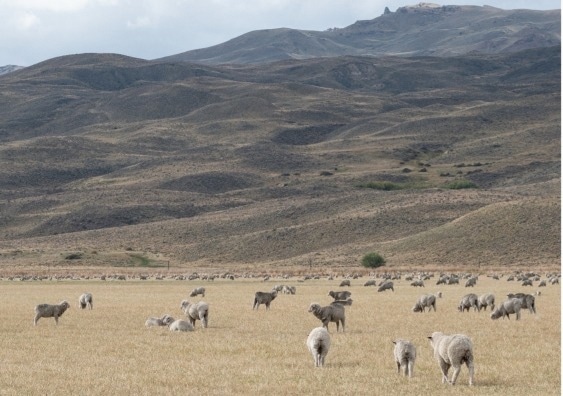Reviewed by Alex SmithNov 28 2022
Grazing is a trillion-dollar industry that is especially vital in drylands, which comprise around 40% of the Earth’s land surface and are home to half of the world’s livestock. Livestock is essential for food, shelter, and capital, but climate change threatens livestock production and the livelihoods of billions of individuals globally.
 Sheep grazing in a semiarid Patagonian rangeland in Argentina. Image Credit: Valeria Aramayo.
Sheep grazing in a semiarid Patagonian rangeland in Argentina. Image Credit: Valeria Aramayo.
An international group of researchers published the first global estimate of how grazing would alter ecosystem services in the world’s drylands in the journal Science.
The study, headed by the Dryland Ecology and Global Change group in Spain with partners from UNSW Sydney, indicates that grazing by livestock and wild herbivores in drylands can benefit ecosystem services. However, these impacts can turn negative when the Earth’s temperature rises.
Effects on Ecosystem Services can Turn Negative
Grazing impacts soils’ ability to grow plants, break down organic matter and supply it to plants, store carbon, generate fertile soils, and manage water availability.
The researchers discovered that grazing pressure was essential for driving all ecosystem services, including carbon storage, organic matter decomposition, soil fertility, and forage quality and quantity.
Grazing can have positive effects on ecosystem services, particularly in species-rich ecosystems. But these positive effects turn to negative under a warmer climate.
David Eldridge, Study Senior Author and Professor, Centre for Ecosystem Science, University of New South Wales
The researchers employed standard protocols to examine the effects of increased grazing pressure on the capability of global drylands to provide nine important ecosystem services for the study.
The team of over 100 colleagues conducted a one-of-a-kind global assessment of 326 drylands from 25 nations, gathering data on plants and soils at sites ranging from low to high grazing pressure. Some places had no grazing, while others had huge populations of sheep and cattle. Wild herbivores such as zebra in Africa and llamas in Chile grazed on others.
Responses to Grazing Depend on Climate
The scientists found that the level of grazing pressure influenced the connections between climate, soil conditions, biodiversity, and ecosystem services.
The responses of some ecosystem services to climate varied with local grazing pressure. For example, stocks of soil carbon declined and soil erosion increased as the climate became warmer, but only under high grazing pressure.
David Eldridge, Study Senior Author and Professor, Centre for Ecosystem Science, University of New South Wales
These findings imply that as the temperature warms, how drylands are managed locally may determine how they respond to ongoing climate change.
Plant Diversity and Different Herbivores
According to the research, the consequences of increased grazing pressure moved from largely positive in colder drylands with less seasonal rainfall and more plant diversity to primarily negative in hotter drylands with high seasonal rainfall and lower plant diversity.
We know from other work that maintaining high plant diversity is an important strategy in drylands. A diverse plant community can help us buffer the negative effects of climate change on dryland soils.
Fernando T. Maestre, Study Lead Author and Professor, Dry Ecology and Global Change Lab, University of Alicante
The authors also discovered that a greater diversity of herbivore types was positively associated with various services, including carbon storage, which is crucial as a climate regulator.
Professor Eldridge concludes, “There is no one-size-fits-all when it comes to grazing in drylands. Any effects of grazing, particularly overgrazing, will vary across the globe, making it important to consider local conditions and the type and number of livestock—and wild herbivores”.
Journal Reference:
Ganguli, A. C. & O’Rourke, M. E. (2022) How vulnerable are rangelands to grazing? Science. doi.org/10.1126/science.add4278.